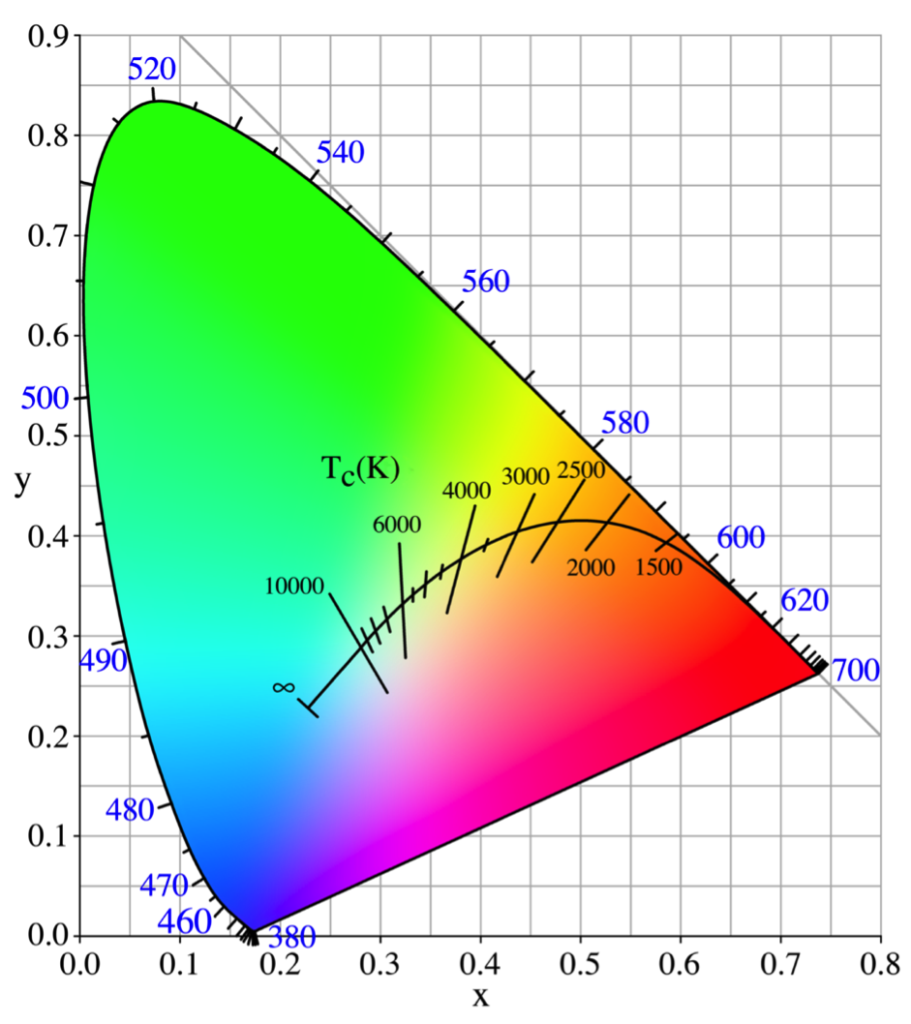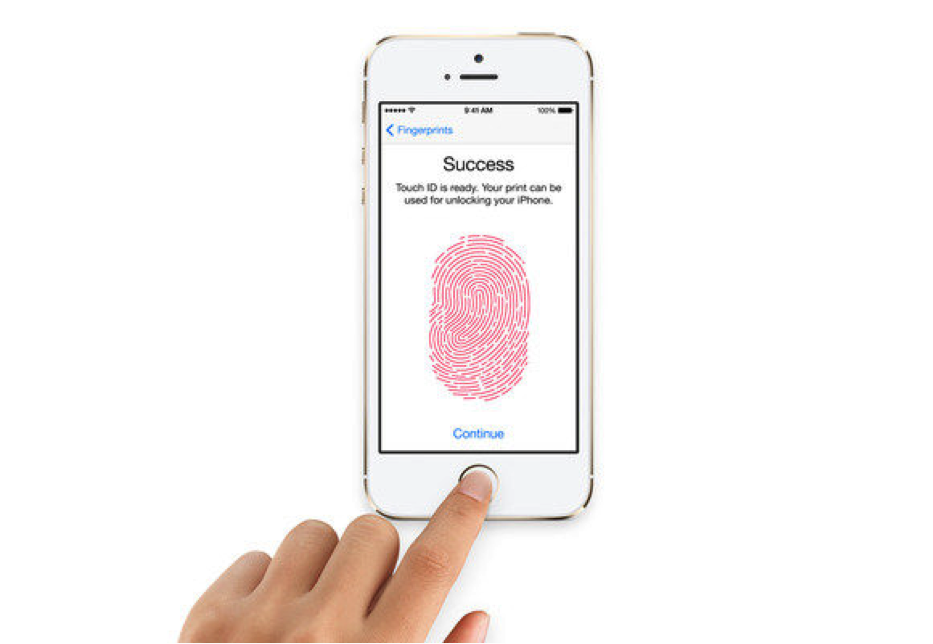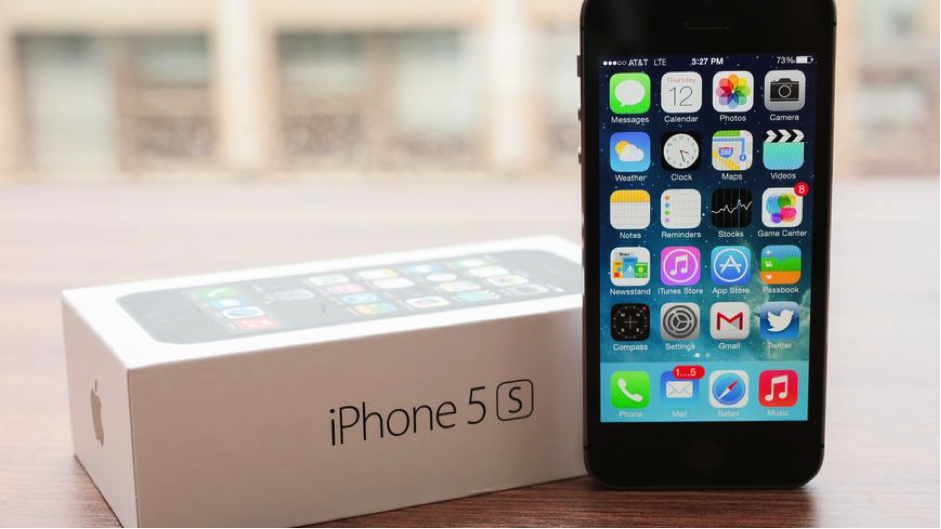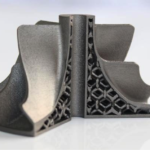Introduction
Now that the hype is all and well over the release of Apple’s iPhone 5S and iPhone 5C, with no shortage of articles written by bloggers, technocrats and aficionados all around the around the world. I’d like to add a few words to the foray and really delve into the aspects of the iPhone 5S and why I think it has what it takes to make it a win.
Well when Steve jobs departed, industry critics prophesized the demise of Apple’s innovative streak. This was true to a certain extent with market dissatisfactions over the incremental improvements of recent product releases that were lacking in ground-breaking and industry-pioneering features that Apple is well-known for.
With the recent leaks over the internet prior to the official launch of the much vaunted and eagerly awaited iPhone 5S; cyberspace has been rife with speculation and conjunctures – which so far has been accurate both in anticipated features and naming nomenclature, namely the iPhone 5C and 5S.
In this short write-up, as a techie with no affiliation to any platform, I will not re-explore debates regarding Android vs. iOS, nor will I defend any manufacturer, economy or ecosystem. I will present facts and my opinions as it is and point out the winning merits in reference of the iPhone 5S in a straightforward manner.
Aside cost, here’s a breakdown on why I think the iPhone 5S will be a phenomenal success over existing competitors and the comments on the features and components that will leave smart-phone industry giants struggling to keep up in their subsequent smartphone model releases.
Camera
There’s no doubt that the built-in camera is one of the most used feature of smartphone. Whilst the megapixel count remains the same at 8MP, Apple made significant strides in its imaging capabilities both in the hardware and software. Briefly speaking, the major advance in recent times is no longer about the megapixel race. Well-informed consumers now know that bigger megapixels doesn’t equate to better pictures. The in-speak now is pixel size, this was first discussed when Nokia released its massive 41-megapixel Pureview smartphone [1].
A major peeve in smartphone photos are noisy pictures (those grainy stuff you see when taking pictures in a dark environment). That’s because not enough light is reaching the sensor. There are two approaches to solve this problem – 1) make the pixel larger, 2) remove obstacles in front of the sensor.
Larger pixels
The larger a pixel is, the more light can be captured by the sensor. The more light captured, the better a picture will look in a darker environment. That’s why DSLR photos look good, because their sensor die areas are huge. DSLRs such as the Canon EOS 700D has an 18-megapixel APS-C sensor and 4.2μm pixel size [2], that’s four times larger than a typical smartphone camera.
As points of reference, the HTC One has a pixel size of 2.0 µm while the iPhone 5 and Nokia 808 Pureview are 1.4 µm. The HTC One was the first smartphone to feature a sensor with a larger pixel, which they called the “Ultrapixel Camera” [3], no other smartphone has yet to follow suit. Till now.
Remove obstacles
Typical CMOS sensors have transistor circuitry in front of the photodiode pixel, hence blocking some photons (light) from reaching the photodiode. To prevent that, an approach called “BSI” (Back-side illuminated) places the wiring behind the photodiode, allowing more light to reach the sensor. Without delving too deeply into camera sensor technologies, two companies who are making great BSI sensors for use in the mobile device industry are Omnivision and Sony.
Apple was using OmniVision’s OV5642 camera module inside the iPhone 4. OmniVision’s secondgeneration OV5650 and OV297AA modules were being used on the iPad 2, the new iPad and the iPod Nano. But Apple switched to Sony’s EXMOR-R sensor for the 4S and 5 [4].
Although speculation revolved around Omnivision’s 4K2K or Quad Full High Definition (QFHD) being the sensor provider for the iPhone 5S [5], iFixit revealed the camera to be Sony’s [6] with serial markings “DNL333 41GRF 4W61W”. According to Chipworks, the “DNL” serials are similar to Sony’s IMX145 sensors in the iPhone 4S and 5, and since we know that the pixel size is 1.5μm, it’s definitely a newer variant.
Whilst we don’t have exact specifications of Apple’s new iPhone 5S camera, chipworks also revealed that the sensor die is likely a Sony Exmor-RS [7]. Sony’s own Exmor-R IMX117CQT is a BSI sensor with a diagonal size of 7.81mm, 1.55 µm pixel size, 12.4 Megapixel at 35fps and can achieve 4K video (4096H x 2160V) at 60fps [8]. This is very consistent with the performance claims of the iPhone 5S.
Sony’s Exmor-R series of CMOS sensors is actually a very good choice, the larger pixels allow more light to be collected, and the Exmor-R is used in Sony’s entire line of Cybershot cameras, Blackfly’s GigE and Flea3 cameras, as well as GoPro’s HERO line of action cameras.
Leap and bounds in improvements
A plausible reason why Apple hasn’t gone into 4K video yet is probably due to memory and/or processor bandwidth limitations, but we’ll not be looking into that yet. Ok, so let’s see what the new sensor is capable of. It’s got a 15% larger sensor, 33% more light captured. A wider F2.2 aperture (compared to the F2.4 of the iPhone 4S, 5 and 5C, that means even more light) and auto image stabilization. Sapphire lens cover, 5-element lens, face-detection and photo geotagging. These are great, but they already exist in consumer point-and-shoots, so what really takes the cake?
For starters, the Slow-Motion (Slo-Mo) feature was first featured in Casio’s High-speed EXLIM line of point-and-shoot cameras in 2010 [9], that feature brought about stunning footage, but wasn’t compelling enough to buy over enough consumers. Then action camera company GoPro released their line of HERO action cameras [10] and a mass marketing campaign that birthed an industry of action cameras [11].
The GoPro HERO line of cameras was a remarkable success, which featured incredible high resolution slo-mo footage. Here’s the kicker. ow the iPhone 5S can do the same. The iPhone 5S can shoot 720p at 120fps footage, this capability bests GoPro’s Hero3 Silver or white edition and can match the GoPro’s flagship black Edition at the lowest setting 720p, the real kicker is that the GoPro retails at $329.99, but for US$399, you can get the 64Gb version of the iPhone 5S!
Between US$329.99 and US$399, what would be the likely choice of consumers? Let’s explore the situation – I would likely carry my phone everywhere I go, but not my action cam. What’s to stop me from getting a water-proof casing and turning my iPhone into an action cam? Waterproof protective casings are widely available [12, 13].
Moreover, with my iPhone 5S, I can take pictures, view and edit and share my footage all on one device instantaneously. Something the GoPro Hero3 has limitations with. There’s no attached LCD screen (unless you buy an attachment), the battery life is a dismal 2.5 hours per charge. Even with the Wi-Fi attachment to a GoPro, I’ll still need my smartphone with Wi-Fi-enabled iOS app to control the GoPro camera.
To further add to the injury, the iPhone 5S is capable of continuous burst mode 10fps photo-stitching mode, 1080p HD video at 30fps, it has live video zoom with auto image stabilization, multiple photos shooting mode. The Slo-Mo video and regular video can be combined to create all new video effects. In Panorama mode, the iPhone 5s can capture 30 fps, which is a 50% improvement over the iPhone
5, plus auto white-balance, exposure, dynamic tone mapping, a 15-point autofocus metering [14].
Continuous 10fps burst mode and 15-point metering? That’s seriously DSLR stuff! Besides, most DSLRs can’t do 120fps, most topping out at 60fps. As an owner of a DSLR system myself, I find that due to the sheer convenience of my smartphone camera, I often avoid the hassle of taking my DSLR out of its dry box.
The iPhone 5S could possibly the single most devastating competitor to the action camera industry, the consumer point-and-shoot camera industry and the prosumer camera market. The features of the iPhone 5S overlap whole product portfolios in both action cam market segments and DSLR markets. With the iPhone 5S, anyone can be a super-photographer/videographer now.
Camera Flash
As a photographer myself, what can we say about this feature of the iPhone 5S? It’s an incredible innovation that is a world’s first! Apple’s solution to a common flash whiteout is so deceivingly simple and yet so effective it has gotten me thinking, “why hasn’t anyone thought of that before?”
Anyone who has used a flash before would have noticed a “white-washout” of faces, that’s because the harsh glare of the LED/xenon flash is not the same colour temperature as human skin, which is of a warmer 3000 Kelvins. Redder colours are “warmer” and have a colour temperature closer to 1000K, whilst bluish-whiter lighting has a colour temperature closer to 10,000K.

To solve the problem of a flash white-out on people’s faces, Apple’s solution is the “true-Tone flash”
and it is truly an original marvel for casual and avid photographers alike [15]. Simply put, two LEDs of different colour temperatures (cooler white and warm amber) is used to create a colour variance to match the ambient colour temperature of the environment where the photo is being taken.
This feature is not just a world’s first on any smartphone; it’s also the world’s first on any camera! Have I already mentioned that the camera has capabilities comparable to point-and-shoots and DSLRs?
Industry-Leading A7 64-bit Processor
As always in the smartphone wars, performances of new devices are always compared with existing market flagships such as the Samsung Galaxy S4 [16] and the HTC One [17], sporting a powerful Qualcomm Snapdragon 600 processor that even the Apple iPhone 5 had trouble competing with.
But the custom 64-bit A7 in the iPhone 5S has a performance improvement almost an order of magnitude better over its predecessors, with phenomenal performance comparable to that of Intel’s latest quad-core Bay Trail processors (it is also impressive that the A7 has only got 2 cores!) [18].
Even Sony’s latest flagship phone, the Xperia Z1 will utilizing Qualcomm’s top snapdragon 800 processor, is still a 32-bit 2.3 GHz Quad-core CPU has a slower 12.8Gb/s memory speed. Moreover, independent tests have consistently shown the iPhone to be more responsive than any of its Android counterparts [19, 20].
Processor Comparisons
| Phone | iPhone 5S | iPhone 5, 5C | Galaxy S4 | HTC One | Advantage? |
| Processor | A7 (APLX069) | A6 (APL0598) | Exynos 5 Octa -5410 | Qualcomm | |
| Die Area | 102 mm2 | 96.71 mm2 | 122 mm2 | 88.09 mm2 | Smaller is better |
| Process | 28nm | 32nm HKMG | 28nm HKMG | 28nm LP | Smaller is better |
| Clock speed | 1.7Ghz | 1.3Ghz | 1.6Ghz | 1.7Ghz | Higher is better |
| Cores | 2 | 2 | 4x Cortex-A15 4x Cortex-A7 | 4 | |
| Address | 64-bit | 32-bit | 32-bit | 32-bit | IPhone 5S |
| Instruction set | ARMv8 | ARMv7 | ARMv7 | ARMv7 | IPhone 5S |
| Memory | 1Gb | 1Gb | 2Gb | 2Gb | Galaxy S4/HTC |
| Memory channels | 4 | 2 | 2 | 2 | IPhone 5S |
| Memory type | LPDDR3-1333 | LPDDR2-1066 | LPDDR3 | LPDDR2-1066 | IPhone 5S |
| Memory freqeuncy | 533 Mhz | 533 Mhz | 800 Mhz | 533 Mhz | Galaxy S4 |
| Memory speed | 17Gb/s | 8.528Gb/sec | 12.8Gb/s | 8.53Gb/sec | IPhone 5S |
Hype over 64-bit
Without delving too deeply into the technical details, having the first 64-bit processor in a mobile device is a major win point for the iPhone 5S. The A7 is the world’s first 64-bit mobile processor, but what does that mean?
Simply put, chips with more bits can handle more memory. A 32-bit chip is designed to handle memory addresses of up to 32-bits while a 64-bit chip is designed to handle memory addresses of up to 64-bits. The advantages of 64-bit are that more RAM can be addressed; the push to 64-bit architectures will be fully appreciated in high-performance server clusters where more memory is actually needed.
ARM first announced the new 64-bit architecture in October 2012 [21], which described the CortexA57 and Cortex-A53 processors eaturing multi-GHz performance on advanced FinFET processes technologies. Back then, only a few large players in the semiconductor industry announced that they will be entering the mobile 64-bit platform using the ARM architecture [22]. Even then production was only slated to begin in 2014 [23], and from then it will take some time before it trickles into the hands of consumers.
One thing is for certain, no one saw it coming. Even veterans in the industry were surprised during the keynote announcement of the 64-bit architecture in the A7. The A7 was made available to the public barely 11 months after the original announcement made by ARM, which is commendable on how fast Apple managed to design and manufacture the chip completely under the radars of global chip-giants.
Apple isn’t the only company building their own SoCs (System on Chip) processors, the ARM architecture is being modified by chipmakers all around the world. Semiconductor giant Samsung has their latest Exynos, Qualcomm’s snapdragon series, NVidia’s Tegra series, Texa’s Instruments OMAPs, Freescale’s i.MX and so on and so forth.
What’s remarkable is that Apple isn’t in the business of selling chips. They built the A7 because no other chip was good enough! On paper the A7 is already superior to NVidia’s next-generation Tegra 5 “Logan”, which will be running a Quad-core cortex-A15 ARMv7 28nm process that is not available in any consumer device yet and will only be released in Q2 2014. Furthermore, the A7 can already be said to match NVidia’s touted claims of its Tegra 6 “Parker”, which will be running NVidia’s 64-bit solution, is slated to be released in 2015. Based on these projected timelines, the iPhone 5S is industry leading by at least one to two entire years.
This diminutive chip has shaken up semiconductor giants in the mobile processor industry. The desktop PC industry took over 10 years to transit from 32-bit to the common 64-bit we have in our computers today, hence it is a logical move for Apple to have introduced the 64-bit architecture in the A7. It’s arguable that 64-bit doesn’t boost performance for a mobile device for now [24], but as with the progression of hardware, eventually smartphones will arrive with 4Gb of RAM. When that happens, Apple will not only have the hardware but an entire application and operating ecosystem that can take advantage of the full benefits of 64-bit [25].
Hardware and Software Integration
Given that the industry momentum will take time to make the transition to 64-bit, Apple’s 64-bit chip will already have laid the foundation for the software market to catch up. How did Apple managed to win the mobile wars so suddenly and so decisively?
The tight integration of software and ecosystem has allowed Apple to release new products without being tied down by external supplier constraints. The biggest point we must look here is that Apple now already has a commercially available 64-bit processor in its newest flagship smartphone, and in terms of software, the 64-bit iOS that was developed in-house would have immediate and unrestricted access to the architecture of the hardware.
However, integration and cooperation between development of Android OS and hardware application processors are not as tightly integrated as the iOS ecosystem and Android OS users have traditionally suffered from OS fragmentation. Android devices obsolete quickly where new OS releases are not compatible with older hardware and users are left without future updates [26-31], a situation made worse when developers release apps for iOS earlier than for the Android platform [32], this is also a reason why iTunes has been a tremendous commercial success, consumers on the iOS can buy creative content on the go, but Android users are left lacking [33]. The ball will keep rolling; developers will now be driven to transit to the iOS platform, where a 64-bit architecture is already ready.
Little is known about Google’s upcoming Android OS, Kit-Kat 4.4 [34], but for hardware manufacturers the cat and mouse game begins. If the OS isn’t 64-bit yet, so why build a 64-bit processor? Even if Samsung releases a 64-bit processor, the OS won’t support it [35], or if Google releases a 64-bit OS, none of the existing applications processors can run it. It’s the chicken and the egg story again.
The A7 64-bit processor of the iPhone 5S isn’t a selling point for one smartphone; rather, it’s a long-term future-proof selling point for the entire iOS app ecosystem.
Becoming an independent chipmaker
Unlike most other phone vendors, Apple began designing its own custom processors after the release of iPhone and has been incrementally acquiring chip-design firms such as PA Semi [36], Anobit [37], Intrinsity [38] and AuthenTec [39] and aggressively building its own chip design team [40, 41].
These acquisitions have helped Apple build a series of increasingly customized SoCs called the “Aseries”. The first few generations of processors were originally manufactured by Samsung [42] and is also confirmed as the manufacturer of the A7 [7].
With several years of chip-design experience since the introduction of their first in-house designed processor, the A4, Apple has made considerable advances in chip-design know-how [43, 44] and is now actively seeking manufacturing capabilities.
Building a fabrication plant is extremely expensive and there aren’t many semiconductor fabrication plants in the world that can manufacture chips on such a scale. Most semiconductor firms are fabless (e.g. Qualcomm, NVidia, Broadcom, AMD, Marvell and Xilinx etc.). A company that operates a fabrication plant for the purpose of manufacturing the designs of other companies and do not produce ICs of their own design are known as “Pure-Play” foundries, some of world’s biggest pure-play foundries based on revenue are TSMC, UMC, Global foundries and SMIC [45].
Semiconductor industry mega-giants who can fab their own chips are known as “Integrated Device Manufacturers” or IDMs. Intel, Samsung, NXP, STMicro, Freescale, Cypress, National Semiconductor, Texas Instruments, Infineon, Bosch and a few other smaller players.
One question begs to be answered, why did Samsung use its competitor Qualcomm Snapdragon 600 processors in a variant model of its flagship Galaxy S4 and Note 3 instead of its own Exynos 5 processor? Of the amount of resources spent in developing the octa-core Exynos 5, the high cost and performance could have forced Samsung to use a competing chip in its devices. Signs show that Samsung is losing the race [46] and manufacturing contracts from Apple [47-49].
Apple now has both Samsung, TSMC and Global UniChip to manufacture its chips [50, 51], but TSMC and Global Foundries both make the competing Snapdragon processor for Qualcomm, which is used to power the HTC One and Galaxy S4 smartphones, so much less is needed to be said about Samsung being the primary contractor for Apple’s A7 chips.
There is evidence that Apple building its own fabrication capability to reduce reliance of competing foundries [52, 53], and this is true, Apple will be moving into a new strategic direction to create its own chips, completely making itself independent of rival foundry manufacturing facilities and further shrouding itself in technological secrecy, most important of which Apple will no longer need to share IP about its new products with Samsung or any other rival firm for that matter.
With its market capitalization, cash in the bank and development in this direction, Apple will become a force to be contended with in the semiconductor industry.
M7 Motion Co-processor
There’s nothing new here, basically an integrated accelerometer, gyroscope and a compass. The Galaxy S4 is using Invensense’s MPU-6050 and the HTC’s One is using the Invensense MPU-3050 which has similar capabilities. But what’s the industry-shaking news regarding this diminutive little chip that most of us take for granted in our own smartphones?
The thing is, the M7 doesn’t need the A7 to work. It’s an independent SoC, with the M7 constantly monitoring movement, this feature overlaps wellness devices like the Fitbit and jawbone [54]. Given the rich iOS ecosystem, built-in radio communication and various other advantages that a smartphone will have that discrete tracking health devices doesn’t have, fitness gadget manufacturers are going to see a major chip in their sales when consumers choose a smartphone that can already do what a wellness tracker can do and more [55].
Whilst existing wellness devices tout other features, the iPhone 5S is a fearsome contender in the growing wearable’s market that other wellness companies are paying attention to right now [56, 57]. Fitness giant Nike has taken the lead by integrating Nike+ move app for use with the M7 [58].
Chipworks provided a lot of insight into the M7 system [7]. It turns out that the M7 is not an integrated 9-DOF (degree of freedom) MEMs sensor. It’s simply a discrete ARM Cortex-M3 microcontroller based on the LPC18A1 by NXP, the LPC1800 series is 120Mhz 32-bit MCU [59].
It is a separate MCU processing data from the 3 discrete MEMs sensors – Bosche Sensortech BMA220 3-axis accelerometer [60], ST microelectronics gyroscope and Asahi Kasei Microdevices’s AK8963 3-axis compass [61]. Why Apple didn’t choose to use other established industry MEMs sensors like STmicro, Freescale or Invensense can only be speculated. We also need to note that Invensense has repeatedly lost out to other MEMs providers in Apple’s decision-making process.
The advantages of having the M7 is tremendous, battery consumption is reduced during tracking as the A7 isn’t engaged. Your phone will now know when you parked your car and maps could transit from diving mode to walking [62, 63]. If you’re moving the phone won’t ask you to join a Wi-Fi network and if you’re sleeping, network activity will decrease to future extend battery life [64, 65].
The M7 system is like a little Fitbit or jawbone within the iPhone 5S, when this feature was first announced, analysts were surprised too, it’s a new direction for apple although several clues have shown Apple’s desire to enter the wearable electronics market [66, 67], and it could serve as an ominous tracking device, reducing our nearly non-existent privacy further [57].
TouchID Fingerprint Sensor

A much-vaunted feature of the iPhone 5S worth shining the spotlight on is the Touch ID biometric sensor. Fingerprint sensors have been around for some time and are present in many PDAs (who uses that term anymore) and business laptops, but if it’s so secure, why hasn’t it been widely adopted by the mobile industry?
Well, the capacitive swipe-down type of fingerprint sensor hasn’t been exactly easy to use and too often reads erroneously, creating consumer frustration. Optical fingerprint sensors used at security checkpoints are far too bulky to be installed in a mobile device. There are many OEM fingerprint providers in the market, with big names such as Motion Micro Solutions [68], DigitalPersona [69], Fingerprints [70], Validity [71], so why did Apple choose not to adopt existing sensors but instead develop their own?
Getting it done right
The tricky balance of biometric security and ease of use has always been at the expense of each other. Most sensors don’t do a very good job at reading fingerprints, are too bulky or utilize too much power for a mobile device, but Apple’s TouchID seems to have all those issues covered [72, 73] with hardware encryption and security integrated at a native level within the processor architecture [74], something unseen is existing fingerprint scanners.
Apple has taken a very thorough and methodical approach with the release of Touch ID system and we can see that there has been a fantastic amount of convergence work done. Efforts spanned several years and have included many patent applications, acquisitions, a custom processor and the integration of ARM’s TrustZone suite all unified together into what we know now as the Touch ID.
No competition
Its clear Apple bought AuthenTec specifically for its fingerprint sensors. After closing the deal, Apple sold off the company’s encryption technology [75]. It is not only the first and only fingerprint sensor in a smartphone today; the sensor is no ordinary swipe-down type capacitive either. To tighten things further, Apple’s AuthenTec TouchID technology will remain exclusively to Apple, the technology will not be released to developers [76] and competitors will not be able to purchase it [77, 78].
With the proprietary TouchID sensor, the iPhone 5S possibly being the most secure smartphone ever [74, 79], the iPhone 5S could be the single device creating a sudden massive consumer demand boom in online commerce transactions. If it works as advertised, this will likely be the best combination we’ve seen of smartphone security and convenience.
This mobile device is going to generate millions of dollars in online revenue in consumer dollars [80], and although not demonstrated yet, in the near future through retail payment card transactions [74, 81], which is major motivational factor for retailers and merchants to scramble to accommodate and accept iOS transactions, a major self-generating cycle of win for Apple.
Battery Life
Battery Comparisons
| Device | iPhone 5 | iPhone 5S | iPhone 5C |
| Battery Size (Whr) | 5.45 | 5.92 | 5.73 |
| Battery Size (mAh) | 1440 mAh | 1570 mAh | 1507 mAh |
Well it only makes sense to add a bigger battery and shrink the electronics if the overall volume must remain the same, Apple advertises a modest 10 hours of talk time, LTE or Wifi internet browsing, 250 hours of standby time. Anandtech managed to dig out some details from FCC [82], and this has been confirmed from teardowns [6, 83].
It is now revealed that the battery is made by Desay Batter Co., Ltd from Huizhou, China [84]. Whilst retaining the similar form factor and build volume over its predecessors, the 5S has managed to retain its talk time to 10 hours (equal with the iPhone 5 and 5C) and standby time to 250 hours as compared with the older iPhone 4S with 8 and 200 hours respectively. This bests the S4’s 7-hour talk time.
That’s two full days of standby time (granted most of us are already accustomed to charging our phones daily). We also must keep in mind that the hardware being utilized is far more advanced, (64-bit M7, TouchID sensor, M7 processor), so it’s a notable improvement.
Conclusion
Amongst the various consumers that I had the opportunity of discussing the volition of their choice of smartphones, I learnt that what type of technology doesn’t really matter. As long as it’s got a great battery life, looks good, works well and takes great pictures. Despite industry criticisms, the “smaller” screen size of the iPhone hasn’t deterred consumers and sales have been booming [85].
With new acquisitions in semiconductor expertise, mapping, security, an entire slew of innovative features in the iOS7 environment, the features and strategic decisions that Apple has made so far will be entirely in their favour. Comparisons have already been made between the existing flagship competitors [86-89], but the iPhone 5S already has a series of distinct features – particularly its leading ecosystem and a lock on important content and enterprise markets, further increasing its lead by standing out in an otherwise poorly differentiated market of smartphones.
In summary, Apple has over-delivered expectations with new and unexpected capabilities. The iPhone 5S has challenged industry giants across markets and is going to shake up entire industries. I might not be wrong to speculate that executives at dozens of companies now are biting their nails and holding emergency meetings to discuss on what the impact of the iPhone 5S will do to their portfolios.
Industry analysts are already predicting massive successes of the new iPhone 5S [90], and the launch weekend saw a record number of 9 million new iPhones sold [91, 92]! Trends are already pointing towards favorable consumer responses in converting consumers over to its iOS ecosystem with the new iOS7 [93].
With all the factors in the equation, I believe the iPhone 5S is going to be a massive success for Apple in the months to come.
Bibliography
- Soon, A. The Nokia 808 PureView’s 41 Megapixels Explained. 2012 28th February 2012 [cited 2013 20th September 2013]; Available from: http://www.hardwarezone.com.sg/featurenokia-808-pureviews-41-megapixels-explained.
- Waller, J. Canon EOS 700D DSLR Sample Photos. 2013 18th April 2013 [cited 2013 20th September 2013]; Available from: http://www.ephotozine.com/article/canon-eos-700d-dslrsample-photos-21784.
- HTC. The New HTC One Camera specs. 2013 2013 [cited 2013 20th September 2013]; Available from: http://www.htc.com/www/smartphones/htc-one/#specs.
- ifixit. iPhone 4S Camera Made by Sony. 2011 October 14, 2011 [cited 2013 20th September 2013]; Available from: http://www.ifixit.com/blog/2011/10/14/iphone-4s-camera-made-bysony/
- Zibreg, C. Hey Apple, here’s your 16MP camera with 4K video capture for 2013 iPhone. 2012 May 23, 2012 [cited 2013 20th September 2013]; Available from: http://www.idownloadblog.com/2012/05/23/omnivision-ov16820-ov16825-camera-sensor/.
- ifixit. iPhone 5s Teardown 2013 20th September 2013 [cited 2013 20th September 2013]; Available from: http://www.ifixit.com/Teardown/iPhone+5s+Teardown/17383/1?singlePage.
- Chipworks. Inside the iPhone 5s. 2013 September 20, 2013 [cited 2013 20th September 2013]; Available from: http://www.chipworks.com/en/technical-competitiveanalysis/resources/blog/inside-the-iphone-5s/.
- Sony, IMX117CQT Diagonal 7.81 mm (Type 1/2.3) Approx. 12.40M-Effective Pixel HighSpeed, High-Sensitivity Back-Illuminated Color CMOS Image Sensor for Consumer Digital Still Cameras and Camcorders. 2012.
- USA, C. Casio Releases Four New Exilim Digital Cameras Led by High-Power Zoom Lens Models. 2010 January 6, 2010 [cited 2013 20th September 2013]; Available from: http://www.casio.com/news/content/E26306EF-1D3F-49C3-BC19-8D9FFA7ACC5E/.
- GoPro. GoPro Hero3 Editions. 2013 [cited 2013 20th September 2013]; Available from: http://gopro.com/hd-hero3-cameras.
- Consulting, F. Worldwide Action Cam Market to Achieve Nearly Two Million Unit Shipments in 2012. 2012 2012/9/24 [cited 2013 20th September 2013]; Available from: http://www.ceatec.com/report_analysis/en/ra_120924.html.
- Bertucci, K. 10 of the Best Waterproof iPhone 5 Cases (list). 2012 Dec 20, 2012 at 6:25 pm 22nd September 2013]; Available from: http://www.gadgetreview.com/2012/12/10-of-thebest-waterproof-iphone-5-cases.html.
- Watershot. Purpose-Built for the Extreme Demands of Water Sports. 2013 23rd September 2013]; Available from: http://www.watershot.com/underwater-camera-housing-iphone.
- Panzarino, M. A Photographer’s Take On The iPhone 5S Camera. 2013 Thursday, September 12th, 2013 [cited 2013 20th September 2013]; Available from: http://techcrunch.com/2013/09/12/a-photographers-take-on-the-iphone-5s-camera/.
- Selby, D.A. What is a True Tone flash? 2013 Wednesday 11 September 2013 [cited 2013 20th September 2013]; Available from: http://www.lightingrumours.com/what-is-true-toneflash-iphone-5s-4657.
- Klug, B. Samsung Galaxy S4 Review 2013 [cited 2013 16th September 2013]; Available from: http://www.anandtech.com/show/6914/samsung-galaxy-s-4-review/3.
- Klug, B. The HTC One Review. 2013 [cited 2013 16th September 2013]; Available from: http://www.anandtech.com/show/6747/htc-one-review.
- Shimpi, A.L. The iPhone 5s Review. 2013 17th September 2013 [cited 2013 18th September 2013]; Available from: http://www.anandtech.com/show/7335/the-iphone-5s-review/.
- Synthhead. iPhone 5 “Twice As Responsive As Any Android Or WP8 Phone’. 2013 September 23, 2013 22nd September 2013]; Available from: http://www.synthtopia.com/content/2013/09/23/iphone-5-twice-as-responsive-as-anyandroid-or-wp8-phone/.
- Clover, J. iPhone 5 Touch Screen Twice as Fast as Android Touch Screen. 2013 Saturday September 21, 2013 2:17 pm PDT 22nd September 2013]; Available from: http://www.macrumors.com/2013/09/21/iphone-5-touch-screen-twice-as-fast-as-androidtouch-screen/.
- ARM Launches Cortex-A50 Series, the World’s Most Energy-Efficient 64-bit Processors. 2012 30 October 2012 [cited 2013 15th September 2013]; Available from: http://www.arm.com/about/newsroom/arm-launches-cortex-a50-series-the-worlds-mostenergy-efficient-64-bit-processors.php.
- AMD and ARM Collaborate to Build 64-bit ARM-based Processors 2012 October 29, 2012 [cited 2013 16th September 2013]; Available from: http://www.amd.com/us/aboutamd/newsroom/Pages/presspage2012Oct29.aspx.
- Merritt, R. AMD Plans 64-bit ARM for Communications in 2014. 2013 9/10/2013 07:55 AM EDT [cited 2013 21st September 2013]; Available from: http://www.eetimes.com/document.asp?doc_id=1319438.
- Hruska, J. iPhone 5S: The 64-bit A7 chip is marketing fluff and won’t improve performance. 2013 [cited 2013 16th September 2013]; Available from: http://www.extremetech.com/gaming/166244-iphone-5s-the-64-bit-a7-chip-is-marketingfluff-and-wont-improve-performance.
- Reed, B. Why Apple’s 64-bit A7 processor matters. 2013 [cited 2013 16th September 2013]; Available from: http://bgr.com/2013/09/11/apple-a7-64-bit-processor-analysis/.
- Koetsier, J. Google updates Android fragmentation numbers, and the numbers are looking better than ever. 2013 September 4, 2013 11:32 PM [cited 2013 21th September 2013]; Available from: http://venturebeat.com/2013/09/04/google-updates-android-fragmentationnumbers-and-the-numbers-are-looking-better-than-ever/.
- Sam. Android Continues to Struggle with Fragmentation Compared to iOS Ecosystem. 2013 July 2013 June 21, 2013 10:58am [cited 2013 20th September 2013]; Available from: http://www.padgadget.com/2013/07/30/android-continues-to-struggle-with-fragmentation-compared-to-ios-ecosystem/
- Smith, C. Apple publishes iOS fragmentation chart on its website, target’s Google’s Android. 2013 June 21, 2013 10:58am [cited 2013 20th September 2013]; Available from: http://www.androidauthority.com/apple-ios-fragmentation-chart-targets-google-android-233600/
- Paczkowski, J. Is iOS Fragmenting? Not Nearly as Much as Android. 2013 June 23, 2013 at 4:22 am PT [cited 2013 20th September 2013]; Available from: http://allthingsd.com/20130623/is-ios-fragmenting-not-nearly-as-much-as-android/
- Jones, C. Can Android Survive Fragmentation? 2013 8/02/2013 @ 10:15AM [cited 2013 20th September 2013]; Available from:
http://www.forbes.com/sites/chuckjones/2013/08/02/can-android-survive-fragmentation/ - Zibreg, C. The horrible state of Android fragmentation. 2013 Jul 30, 2013 [cited 2013 20th September 2013]; Available from: http://www.idownloadblog.com/2013/07/30/the-terriblestate-of-android-fragmentation/
- Dredge, S. If Android is so popular, why are many apps still released for iOS first? 2013 Thursday 15 August 2013 16.30 BST [cited 2013 20th September 2013]; Available from: http://www.theguardian.com/technology/appsblog/2013/aug/15/android-v-ios-apps-applegoogle.
- Synthhead. Why Android, The #1 Mobile Platform, Won’t Get Great Music Apps. 2013 30th July, 2013 22nd September 2013]; Available from: http://www.synthtopia.com/content/2013/07/30/why-android-the-1-mobile-platform-wontget-great-music-apps/
- D’Orazio, D. Android KitKat is the next version of Google’s mobile operating system. 2013 September 3, 2013 12:40 pm [cited 2013 20th September 2013]; Available from: http://www.theverge.com/2013/9/3/4690214/android-kit-kat-is-the-next-version-of-googlesmobile-operating-system
- Paczkowski, J. Samsung: Of Course, Our Next Smartphones Will Be 64-Bit (Spoiler: Android Doesn’t Support 64-Bit, Yet). 2013 September 12, 2013 at 8:01 am PT [cited 2013 20th September 2013]; Available from: http://allthingsd.com/20130912/samsung-of-course-ournext-smartphones-will-be-64-bit/
- Staff, A. Apple buys chip designer PA Semi for $278 million. 2008 Wednesday, April 23, 2008, 05:00 am PT (08:00 am ET) [cited 2013 18th September 2013]: http://appleinsider.com/articles/08/04/23/apple_buys_chip_designer_pa_semi_for_278_millio
n.html - Dilger, D.E. Inside Anobit: Why Apple is investing in flash memory technology. 2011 Wednesday, December 14, 2011, 05:50 pm PT (08:50 pm ET) http://appleinsider.com/articles/11/12/14/inside_anobit_why_apple_is_investing_in_flash_ram_technology/
- Dilger, D.E. Intrinsity likely powers Apple’s A4 iPad processor. 2010 [cited 20th September 2013]; http://appleinsider.com/articles/10/04/21/intrinsity_likely_powers_apples_a4_ipad_processor.html
- Dilger, D.E. Apple scrambled to buy AuthenTec to get its fingerprint scanner into new devices. 2012 Thursday, August 16, 2012, 10:18 am PT (01:18 pm ET) [cited 20th September 2013]; http://appleinsider.com/articles/12/08/16/apple_scrambled_to_buy_authentec_to_get_its_fingerprint_scanner_into_new_devices.html
- Kane, Y.I., et al. In Major Shift, Apple Builds Its Own Team to Design Chips 2013 April 30, 2009 [cited 18th September 2013]; Available from: http://online.wsj.com/article/SB124104666426570729.html
- Dilger, D.E. Apple actively courting TI employees as A6-rival OMAP chip put on ice. 2012 Thursday, September 27, 2012, 01:36 pm PT (04:36 pm ET) [cited 2013 20th September 2013]; Available from: http://appleinsider.com/articles/12/09/27/apple-actively-courting-tiemployees-as-a6-rival-omap-chip-put-on-ice
- Clark, D. IPad Taps Familiar Apple Suppliers 2010 April 5th, 2010 [cited 16th September 2013]; Available from: http://online.wsj.com/article/SB10001424052702303912104575164112770784290.html?mod=rss_Today%27s_Most_Popular
- Demerjian, C. Apple’s silicon design capabilities increase. 2013 2 January 2013 [cited 22nd September 2013]; Available from: http://semiaccurate.com/2013/01/02/apples-silicondesign-capabilities-increase/
- Schonfeld, E. Apple Has 1,000 Engineers Working On Chips For The Post-PC Era. 2011 Sunday, October 9th, 2011 [cited 20th September 2013]; Available from: http://techcrunch.com/2011/10/09/apple-1000-engineers-chips/
- LaPedus, M. UMC Seeks to Shed Image as ‘Fast Follower’. 2012 10 February 2012 [cited 22nd September 2013]; Available from: http://semimd.com/blog/2012/02/10/umcseeks-to-shed-image-as-%E2%80%98fast-follower%E2%80%99/
- Lowensohn, J. Jury awards Apple more than $1B, finds Samsung infringed. 2012 August 24, 2012 3:53 PM PDT 20th September 2013]; http://news.cnet.com/8301-13579_3-57500159-37/jury-awards-apple-more-than-$1b-finds-samsung-infringed/
- Dilger, D.E. After its disastrous Exynos 5 Octa, Samsung may have lost Apple’s A7 contract to TSMC. 2013 Saturday, September 14, 2013, 02:37 am PT (05:37 am ET) [cited 2013 20th September 2013]; http://appleinsider.com/articles/13/09/14/after-itsdisastrous-exynos-5-octa-samsung-may-have-lost-apples-a7-contract-to-tsmc
- Hussey, T. Rumor: Possible loss of Apple orders may force Samsung to delay construction of new chip fab. 2012 Nov 08, 2012 20 September 2013]; http://www.iphonehacks.com/2012/11/rumor-possible-loss-of-apple-orders-may-forcesamsung-to-delay-construction-of-new-chip-fab.html
- Hussey, T. Would a Switch to TSMC Hurt the Entire Industry? Nov 28, 2012 20th September 2013]; Available from: http://www.iphonehacks.com/2012/11/would-a-switch-totsmc-hurt-everyone.html
- Fingas, J. Apple reportedly clinches TSMC chip manufacturing deal. 2013 Jun 28th, 2013 at 9:21 PM [cited 2013 21st September 2013]; Available from: http://www.engadget.com/2013/06/28/apple-reportedly-clinches-tsmc-chip-manufacturingdeal/
- Parrish, K. TSMC Signed on to Produce Apple’s A8, A9 and Later. 2013 June 25, 2013 11:00 AM [cited 2013 22nd September 2013]; Available from: http://www.tomshardware.com/news/TSMC-Apple-A-Series-A8-Global-UniChip,23217.html
- Truta, F. Apple to Start Making Its Own Chips, Says Report. 2013 [cited 2013 16th September 2013]; Available from: http://news.softpedia.com/news/Apple-to-Start-Making-ItsOwn-Chips-Says-Report-367996.shtml
- Parrish, K. Rumor: Apple Buys Taiwan Fab to Build Its Own Chips. 2013 July 13, 2013 10:00 AM [cited 22nd September 2013]; Available from: http://www.tomshardware.com/news/TSMC-Samsung-Apple-UMC-A-Series,23509.html
- Sumra, H. iPhone 5s Includes New ‘M7’ Motion Coprocessor for Health and Fitness Tracking Tuesday September 10, 2013 10:57 am PDT [cited 2013 20th September 2013]: http://www.macrumors.com/2013/09/10/iphone-5s-includes-new-m7-motioncoprocessor-for-health-and-fitness-tracking/
- dslarsen. Fitness gadget makers should be very afraid: Apple’s M7 chip, built into iPhone 5s, paves the way for iWatch. 2013 Friday, September 13, 2013 · 4:29 pm [cited 20th September 2013]; http://macdailynews.com/2013/09/13/fitness-gadgetmakers-should-be-very-afraid-apples-m7-chip-built-into-iphone-5s-paves-the-way-for-iwatch/
- Bennett, B. Should fitness gadget makers fear the iPhone 5S? 2013 September 12, 2013 5:32 PM PDT [cited 2013 20th September 2013]; http://reviews.cnet.com/8301-6452_7-57602497/should-fitness-gadget-makers-fear-theiphone-5s/
- Estes, A.C. How Apple’s M7 Chip Makes the iPhone 5S the Ultimate Tracking Device. 2013 9th September 2013; 4.30pm [21st September 2013] http://gizmodo.com/how-apples-m7-chip-makes-the-iphone-5s-the-ultimate-tr-1286594287
- Smith, J. Nike+ Move will be first motion app for iPhone 5S, taking advantage of M7 processor. 2013 10 September 2013 [cited 2013 21st September 2013]: http://www.pocket-lint.com/news/123566-nike-plus-move-will-be-first-motion-app-for-iphone-5s-taking-advantage-of-m7-processor
- NXP. Experience NXP’s Cortex-M3 based microcontroller series. 2013 [cited 2013 21st September 2013] http://www.nxp.com/products/microcontrollers/cortex_m3/
- Sensortec, B. BMA220. 2013 [cited 2013 21st September 2013]; http://www.boschsensortec.com/en/homepage/products_3/3_axis_sensors/acceleration_sensors/bma220_1/bma220
- Corporation, A.K.M. AK8963 3-axis electronic compass IC. 2013 20th September 2013]; Available from: http://www.akm.com/akm/en/product/datasheet1/?partno=AK8963
- Gurman, M. iPhone’s M7 motion processor to integrate with Maps as Apple develops indoor mapping, public transit. 2013 September 12, 2013 / 7:17 am [cited 2013 21st September 2013]; http://9to5mac.com/2013/09/12/iphones-m7-motion-processor-tointegrate-with-maps-as-apple-develops-indoor-mapping-public-transit/
- Colon, A. Apple’s M7 coprocessor might bring big improvements to its mapping abilities. 12 September 2013: 11.39 AM PDT [cited 21st September 2013]; http://gigaom.com/2013/09/12/apples-m7-coprocessor-might-bring-big-improvements-to-itsmapping-abilities/
- Martin, M. The iPhone’s M7 Motion coprocessor and Maps. Sep 12th 2013 at 5:00PM [cited 2013 20th September 2013]; Available from: http://www.tuaw.com/2013/09/12/theiphones-m7-motion-coprocessor-and-maps/
- Burns, C. iPhone 5S Apple M7 coprocessor “knows” when you are sleeping. 2013 12th September 2013 [cited 21st September 2013]; Available from: http://www.slashgear.com/iphone-5s-apple-m7-coprocessor-knows-when-you-are-sleeping-12297615/
- Purcher, J. New Technology Surfaces that Could Assist Apple’s Wearable Computer Project. News, Rumors & Special Reports 2013 2nd August 2013 [cited 2013 17th September 2013]; Available from: http://www.patentlyapple.com/patently-apple/2013/08/new-technologysurfaces-that-could-assist-apples-wearable-computer-project.html
- Purcher, J. Body Area Networks: Apple, Sensor Strips & the iPhone 2010 March 31, 201 [cited 17th September 2013]; Available from: http://www.patentlyapple.com/patentlyapple/2010/03/body-area-networks-apple-sensor-strips-the-iphone.html
- Solutions, M.M. FPC-SAK Swipe Fingerprint sensor. 2013 [cited 22nd September 2013]; Available from: http://www.motionmicro.com/fpc-sak/
- DigitalPersona. TCET TouchChip Modules. 2013 22nd September 2013]; http://www.digitalpersona.com/Fingerprint-iometrics/OEM-Modules/TCET-TouchChipModules/
- Fingerprints. Compact & Robust Swipe sensor FPC1080A. 2013 22nd September 2013]: http://www.fingerprints.com/
- Validity’s patented LiveFlex® fingerprint sensor technology. 22nd September 2013]; http://www.validityinc.com/
- Branscombe, M. Why the iPhone’s fingerprint sensor is better than the ones on older laptops. September 11, 2013 12:14 PM [cited 2013 22nd September 2013]: http://www.citeworld.com/security/22399/iphone-fingerprint-scanner-betterbiometrics?page=0
- Dilger, D.E. Apple, Inc. gets its fingerprints on advanced touch sensor, appears difficult for Android to copy. 2013 Wednesday, August 07, 2013, 01:20 am PT (04:20 am ET) 19th September 2013]; http://appleinsider.com/articles/13/08/07/apple-inc-getsits-fingerprints-on-advanced-touch-sensor-appears-difficult-for-android-to-copy
- Roemmele, B. What is Apple’s new Secure Enclave and why is it important. 2013: http://www.quora.com/Apple-Secure-Enclave/What-is-Apple’s-new-Secure-Enclaveand-why-is-it-important
- Marsal, K. AuthenTec sells encryption business, suggesting Apple’s interest lies in fingerprint sensors. 2013 Monday, November 19, 2012, 10:51 am PT (01:51 pm ET) 19th September 2013]; http://appleinsider.com/articles/12/11/19/authentec-sells-encryptionbusiness-suggesting-apples-interest-lies-in-fingerprint-sensors
- Fried, I. Developers Will Not Get Access to Touch ID Sensor – For Now. 2013 September 10, 2013 AT 11:45 AM PT [cited 2013 16th September 2013]; http://allthingsd.com/20130910/iphone-developers-wont-get-fingerprint-readerauthentication-option-for-now-anyway/
- Campbell, M. AuthenTec to reportedly ditch non-Apple customers in 2013. 2012 Monday, September 24, 2012, 03:46 pm PT (06:46 pm ET) 19th September 2013]; http://appleinsider.com/articles/12/09/24/authentec_to_reportedly_ditch_non_apple_customers_in_2013
- Mayhew, S. AuthenTec to stop selling fingerprint technology to Apple competitors. 2012 September 27, 2012 20th September 2013]: http://www.biometricupdate.com/201209/authentec-to-stop-selling-fingerprint-technology-toapple-competitors
- Soon, A. Why the iPhone 5s Will Be the Most Secure Smartphone on the Market. 13 Sep 2013 / 11:45am [cited 2013 20th September 2013]; http://www.hardwarezone.com.sg/tech-news-why-iphone-5s-will-be-most-securesmartphone-market
- Bedigian, L. Apple Acquired AuthenTec To Become The ‘Champion Of Mobile Commerce’ (AAPL). 10`2 August 20, 2013 10:44 AM 20th September 2013]; http://www.benzinga.com/analyst-ratings/analyst-color/13/08/3851233/apple-acquiredauthentec-to-become-the-champion-of-mobil
- ARM. Mobile Payments. 2013 22nd September 2013]: http://www.arm.com/markets/mobile/trustzone-and-mobile-payments.php
- Klug, B. Apple Increases iPhone 5C and 5S Battery Sizes relative to iPhone 5. 2013 12th September 2013, 4.00AM EST [cited 16th September 2013]; http://www.anandtech.com/show/7324/apple-increases-iphone-5c-and-5s-battery-sizesrelative-to-5
- iExperts. iPhone 5/5S/5C Teardown (Updated). 2013: http://iexpertsaustralia.blogspot.sg/2013/09/iphone-55s5c-teardown.html
- Desay, Shenzhen Desay Battery Technology Co., Ltd. 2013.
- Siegal, J. iPhone’s U.S. market share continues to grow even without new models. 2013 Sep 3, 2013 at 6:30 PM 22nd September 2013]; Available from: http://bgr.com/2013/09/03/apple-iphone-market-share-growth/
- Shanklin, W. iPhone 5s vs. HTC One. 2013 September 16, 2013 [cited 20th September 2013]; Available from: http://www.gizmag.com/htc-one-vs-iphone-5s-specscomparison/29086/
- 87. Shanklin, W. iPhone 5s vs. Galaxy S4. 2013 10th September 2013 [cited 20th September 2013]; Available from: http://www.gizmag.com/galaxy-s4-vs-iphone-5s/29030/
- Dellinger, A. How the iPhone 5S stacks up with the Galaxy S4 and HTC One. 2013 September 10, 2013 [cited 2013 20th September 2013]; http://www.digitaltrends.com/mobile/iphone-5s-vs-galaxy-s4-vs-htc-one/
- Chavez, C. iPhone 5S vs Galaxy S4 vs HTC One. 2013 Sep 10th 2013 [cited 2013 20th September 2013]; Available from: http://phandroid.com/2013/09/10/iphone-5s-vs-galaxy-s4-vs-htc-one/
- Bedigian, L. iPhone 5S Will Be Apple’s ‘Most Successful Launch Ever’. 2013 August 12, 2013 2:28 PM [cited 2013 20th September 2013]: http://www.benzinga.com/analyst-ratings/analyst-color/13/08/3831622/iphone-5s-will-beapples-most-successful-launch-ever#
- Rayman, N. Apple Says It Sold 9 Million iPhones, Setting Record. 2013 Sept. 23, 2013 23rd September 2013]; Available from: http://techland.time.com/2013/09/23/apple-says-it-sold-9-million-iphones-setting-record/
- Grobart, S. Two Reasons Apple Sold 9 Million iPhones This Weekend. 2013 September 23, 2013 24th September 2013]; Available from: http://www.businessweek.com/articles/2013-09-23/apple-sold-9-million-iphones-last-weekend-dot-heres-why
- Satariano, A. Apple Sells Record 9 Million IPhones in Debut Weekend. 2013 Sep 24, 2013 6:27 AM GMT+0800 24th September 2013]; http://www.bloomberg.com/news/2013-09-23/apple-sells-record-9-million-iphones-in-debutweekend.html






